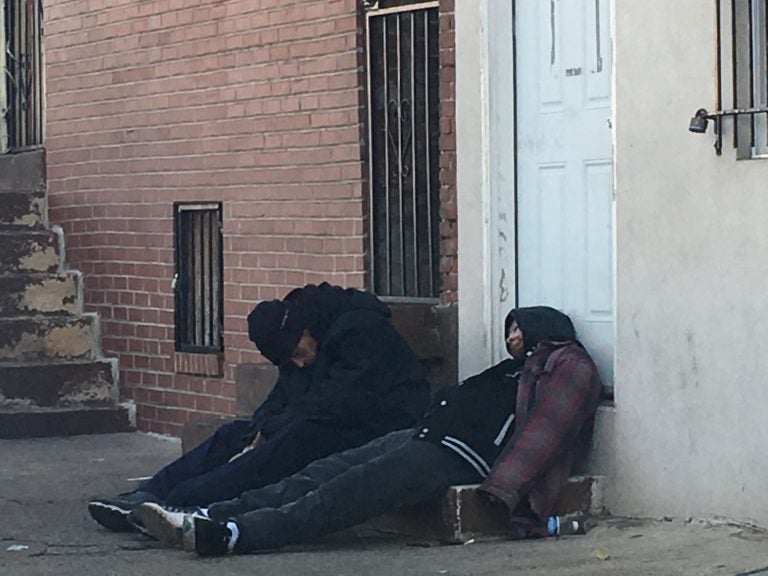Philadelphia’s Kensington neighborhood has become a heartrending testament to the pervasive and devastating grip of heroin addiction. This once thriving and close-knit community is now blighted by a seemingly inescapable crisis, with heroin being its primary tormentor. The disheartening reality that Kensington faces is a complex interplay of economic decline, societal neglect, and a rampant opioid epidemic.
The once bustling streets of Kensington are now lined with discarded needles, a chilling indicator of the rampant heroin use. The neighborhood’s battle with this crisis is visible in the gaunt faces of its inhabitants, many of whom are now trapped in a vicious cycle of addiction. The epidemic is so pervasive that it has transformed the neighborhood into an open-air drug market, where the use of heroin is overt and commonplace.
The economic downturn has only exacerbated the crisis, pushing many into the clutches of substance abuse as a means to escape the harsh realities of life. The lack of employment opportunities and the crumbling infrastructure lend to a sense of hopelessness, making the lure of heroin even stronger. The economic despair is evident in the abandoned factories and dilapidated homes that dot the neighborhood, a stark contrast to the vibrant community that once was.
The societal neglect that Kensington has experienced is also a significant contributor to the heroin crisis. The lack of adequate healthcare and rehabilitation services has left many without the necessary resources to combat their addiction. The reduced funding for public education has also played a role, with many young people lacking the knowledge and understanding about the dangers of drug abuse.
The opioid epidemic, which has swept across the nation, has hit Kensington particularly hard. The availability of cheap and potent heroin has led to an increase in addiction rates. The devastating impacts of this epidemic are evident in the rising number of overdose deaths and the strain on emergency services.
The harsh reality of Kensington’s struggle with heroin is a stark reminder of the urgent need for comprehensive strategies to combat the opioid epidemic. This includes not just a focus on law enforcement, but also an investment in health services, education, and economic development. The people of Kensington, like many communities across the nation, deserve a future free from the devastating grip of heroin addiction.

Kensington’s Struggle: Heroin’s Grim Presence in a Troubled Neighborhood
Kensington, a neighborhood in Philadelphia, has long been embattled by the pervasive presence of heroin use. This struggling community, once vibrant with rich cultural heritage and thriving industries, has seen its streets dominated by the grim realities of heroin addiction. Its residents, trapped in a vicious cycle, face daily challenges that go beyond the mere deprivation of resources or lack of economic opportunity. The escalating use of this substance has cast a dark shadow over the neighborhood, leading to a surge in poverty, homelessness, and health issues among its inhabitants.
The heart-wrenching specter of addiction is ever-present in Kensington, with countless lives damaged or lost to the relentless grip of heroin. Unassuming houses, vacant lots, and dimly lit corners have become havens for users, symbolizing the deep-rooted crisis that has consumed the community. The local health system is overwhelmed, struggling to cope with the mounting demands for treatment and rehabilitation services.
The neighborhood’s struggle with heroin is not merely a crisis of substance abuse, but a social issue that has been exacerbated by a complex web of factors. Systemic neglect, economic disparity, and societal stigma have all played a part in Kensington’s descent into a heroin stronghold. The epidemic has not only ravaged the physical health of residents but also eroded the very fabric of the community, leading to a breakdown of social norms and values.
Nonetheless, the spirit of resilience prevails in Kensington. Despite the harrowing reality of heroin’s grasp, there are glimmers of hope. Grassroots organizations, volunteers, and community members are stepping up to combat the issue, offering assistance, resources, and empathy to those affected. Their efforts, although often overshadowed by the magnitude of the problem, underline the continued fight against heroin’s grim presence in Kensington. Their struggle is a testament to the human spirit’s capacity to endure, fight back, and seek change, even in the face of seemingly insurmountable odds.
The Reality of Heroin in Kensington: A Community in Crisis
Kensington, a neighborhood in Philadelphia, has become the epicenter of a distressing heroin epidemic. This crisis has transformed the community into a drug-riddled environment, significantly affecting its residents who are confronted by a grim reality of despair and addiction. The once vibrant neighborhood now faces profound challenges, with the public spaces converted into open-air drug markets.
The misery is evident in the hollow eyes of the addicts, the discarded needles littering the streets, and the gloomy atmosphere that has enveloped the place. Not only does the rampant heroin abuse impact the physical wellbeing of its users, it also has severe psychological implications, leading to helpless addicts spiraling down a path of destruction.
The community itself is struggling, with families torn apart and youth trapped in the vicious cycle of addiction. Efforts to combat this crisis have been challenging, with the sheer magnitude of the problem often overwhelming the resources available. Rehabilitation centers and outreach programs strive to offer help, but the grip of addiction is often too powerful, rendering these initiatives insufficient.
Consequently, Kensington remains trapped in a labyrinth of despair, its residents battling not only the addiction, but also the societal stigma and the deteriorating quality of life. This crisis underscores the urgent need for comprehensive, empathetic, and effective strategies that not only focus on treating the addiction, but also on revitalizing the community.
A change is needed that will rekindle hope, restore dignity, and rehabilitate the lives of those affected. The reality of heroin in Kensington is a sobering reminder of the devastating impact of drug abuse, a problem that requires collective commitment and action to resolve.

The Impact of Heroin on Kensington’s Residents and Local Services
The opioid crisis, particularly the widespread use of heroin, has had a profound impact on Kensington’s residents and local services. The addictive nature of this substance has led to a surge in substance abuse among the inhabitants, leading to a myriad of issues that have significantly strained local resources.
Services like healthcare, housing, and social support are overwhelmed by the escalating demands, placing an enormous financial burden on the community. The health sector is the most affected, with hospitals dealing with a high number of overdose cases and associated health complications. Mental health services also report an upsurge in demand, as many heroin users struggle with concurrent mental health issues.
The housing sector is equally impacted, with a growing number of residents facing homelessness due to the devastating financial consequences of heroin addiction. Social support services, on the other hand, are overwhelmed by the increasing number of children needing care due to parental substance abuse. Moreover, the widespread use of heroin has led to a deterioration of public spaces, making them unsafe and unsanitary.
The local economy has also suffered, as businesses struggle with the reduced foot traffic and increased security concerns. In essence, the heroin crisis in Kensington not only affects the users themselves but also extends its ramifications to almost every facet of the community. It is a complex issue that requires a comprehensive, multifaceted approach to address.

Stories from Kensington: Personal Accounts of Heroin’s Toll
Stories from Kensington offer a heart-wrenching glimpse into the devastating impacts of heroin on the lives of individuals and the community at large. These personal narratives paint a vivid picture of the struggle, despair, and upheaval caused by this powerful substance. Many of these stories recount the downfall of once vibrant and hopeful individuals who, lured by the temporary escape heroin offers, find themselves ensnared in a relentless cycle of dependency. This dependency, often accompanied by deteriorating health, fractured relationships, and a deteriorating sense of self-worth, creates a reality that is both tragic and harrowing.
In Kensington, one of the most affected areas, the community’s fabric has been torn apart by the widespread use of heroin. Families are left to pick up the pieces, as their loved ones grapple with the unyielding grip of addiction. The ripple effect of this crisis extends to every corner of the community, affecting everything from the local economy to the education system.
Despite the bleakness, these stories also highlight the resilience of the human spirit. In the face of adversity, many Kensington residents are fighting back, trying to reclaim their lives from heroin’s grasp. These accounts of recovery and redemption serve as a beacon of hope amidst the prevailing gloom, a testament to the strength and courage of those who are battling this scourge.
In the end, Stories from Kensington is a powerful reminder of the destructive power of heroin. It underscores the urgent need for compassionate, comprehensive solutions that address not only the physical aspects of addiction but also the underlying psychological and socio-economic factors. The personal accounts from Kensington serve as a wake-up call to society, urging us to look beyond the stigma and stereotypes, and instead focus on understanding, empathy, and action.